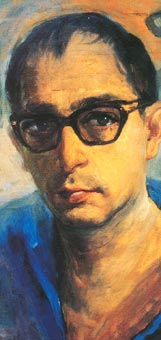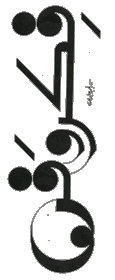|
|
»In his sculptures Saad el Girgawi has found the third dimension for the exploration of his creativity. [....] The shapes of these sculptures call for a comprehension in the literal sense - in order to fully grasp their meaning you will have to get into physical contact with them, in order to feel their integral labyrinths of signification you will have to touch them...«
Dr. Franz Metzger, art historian in Nuremberg |
|
»Again and again he accepts the endless challenges of the human body, and even if he does no longer need to prove the virtuosity of his hand neither to himself nor to the viewer, he still consistently finds fresh and amazing aspects - and new techniques.«
Dr. Franz Metzger, art historian, Nuremberg, 1989 |
|
»In his pictures the artist as observer, as dreamer and as the curiously playing child is being reflected. [Girgawi] consistently tries new things, breaks old habits, quotes well-known things and varies them at the same time diversely and surprisingly.«
Dr. Sigrid Mahsberg, Würzburg 2000 |
|
»Open-mindedness is probably one of the key characteristics of Saad el Girgawi. He opens himself for the things, he closely observes his environment, especially things which are presented in their own characteristics, human beings and their behaviour.«
Dr. Sigrid Mahsberg, Würzburg 2000
|
|
»The identity of an artist like Saad el Girgawi, who lived exclusively within the Arabian World [...] was unquestionably formed by his socio-culture - even if at the same time he was exposed and felt committed to the conventions of Western art, well beyond his studies at the academy of art in Cairo.«
Prof. Dr. Magdi Youssef, deputy chairman of the international association of intercultural studies and member of the association of German writers, Bochum |
|
»You can say, the art of el Girgawi is strongly affected by his environment, and characterised by an intensive sensation, sensibility and fidelity.«
Feisal Aschour, chief editor of the magazine Arraed el Arabi, Kuwait 1962 (translated from Arabic) |
|
|
|
 |







